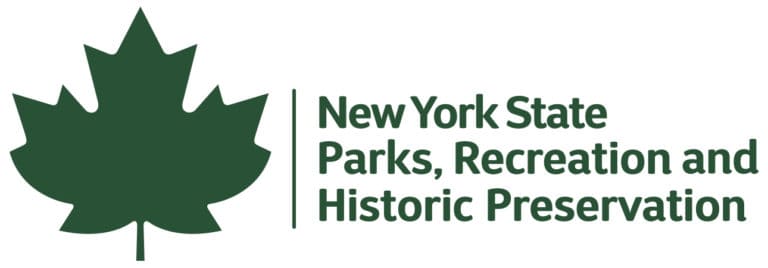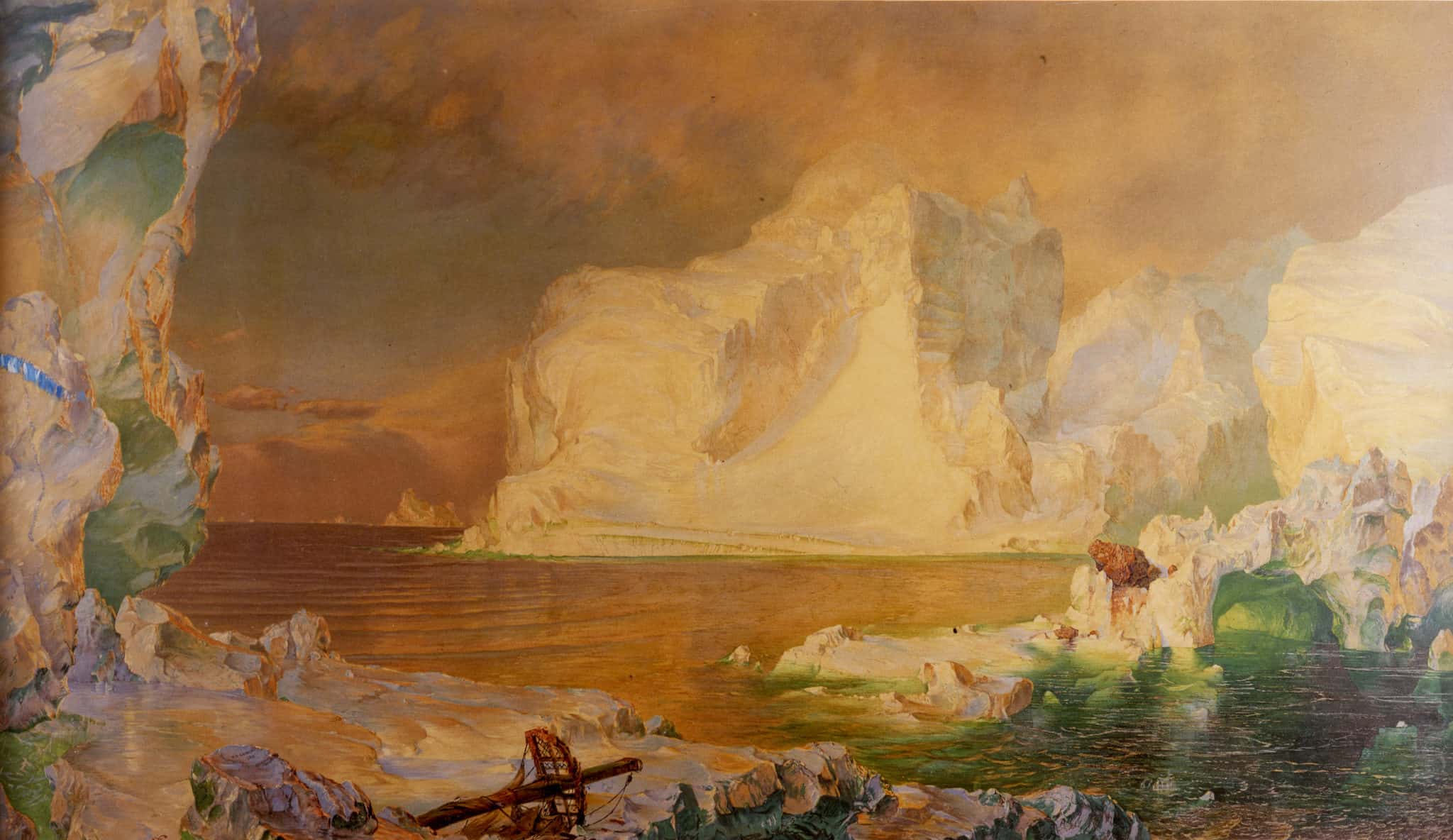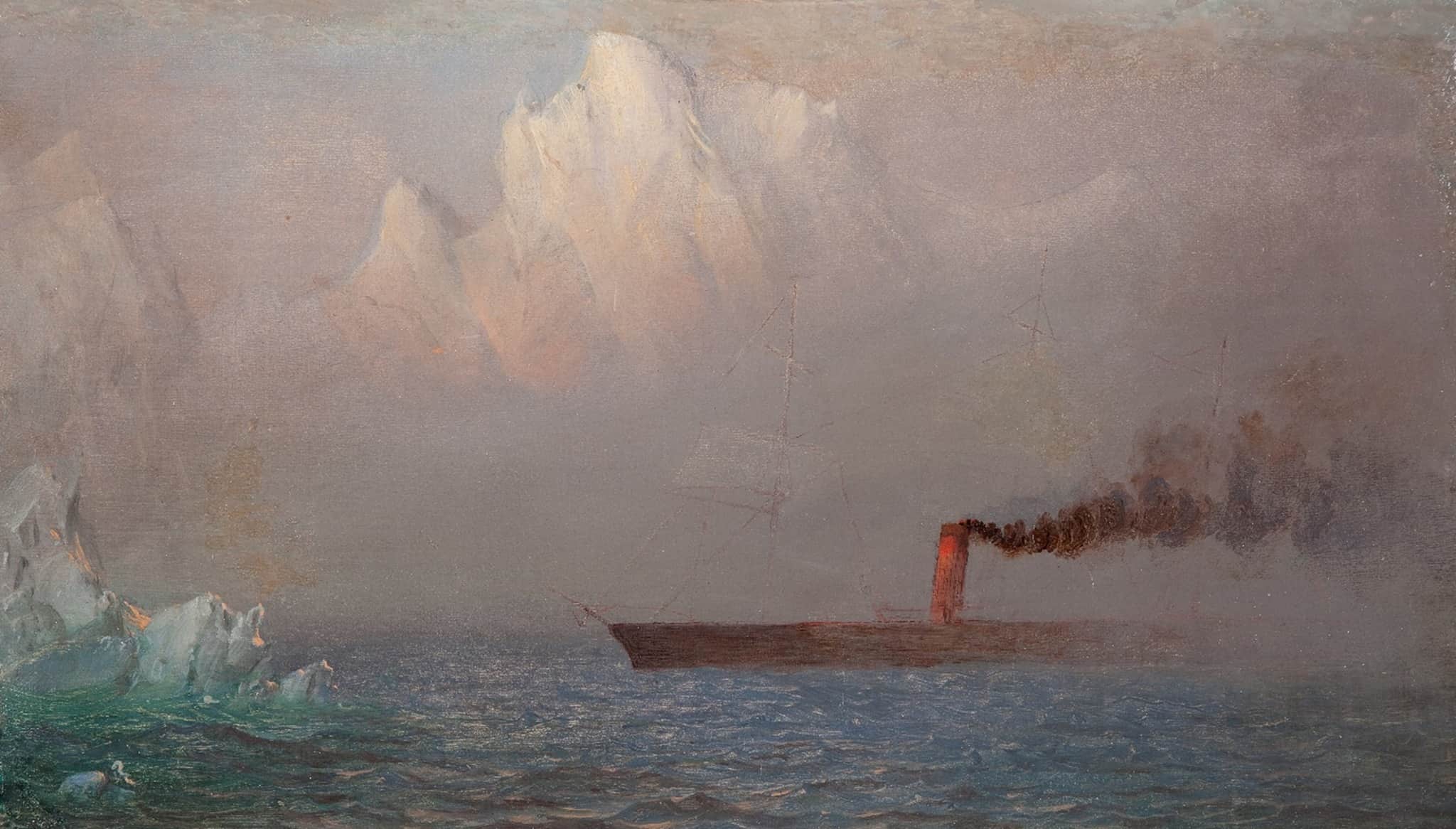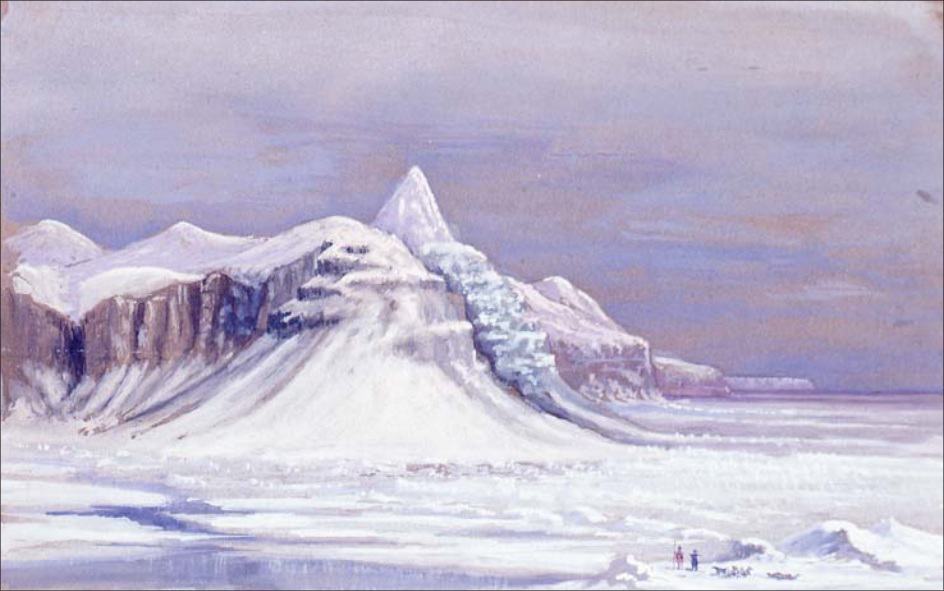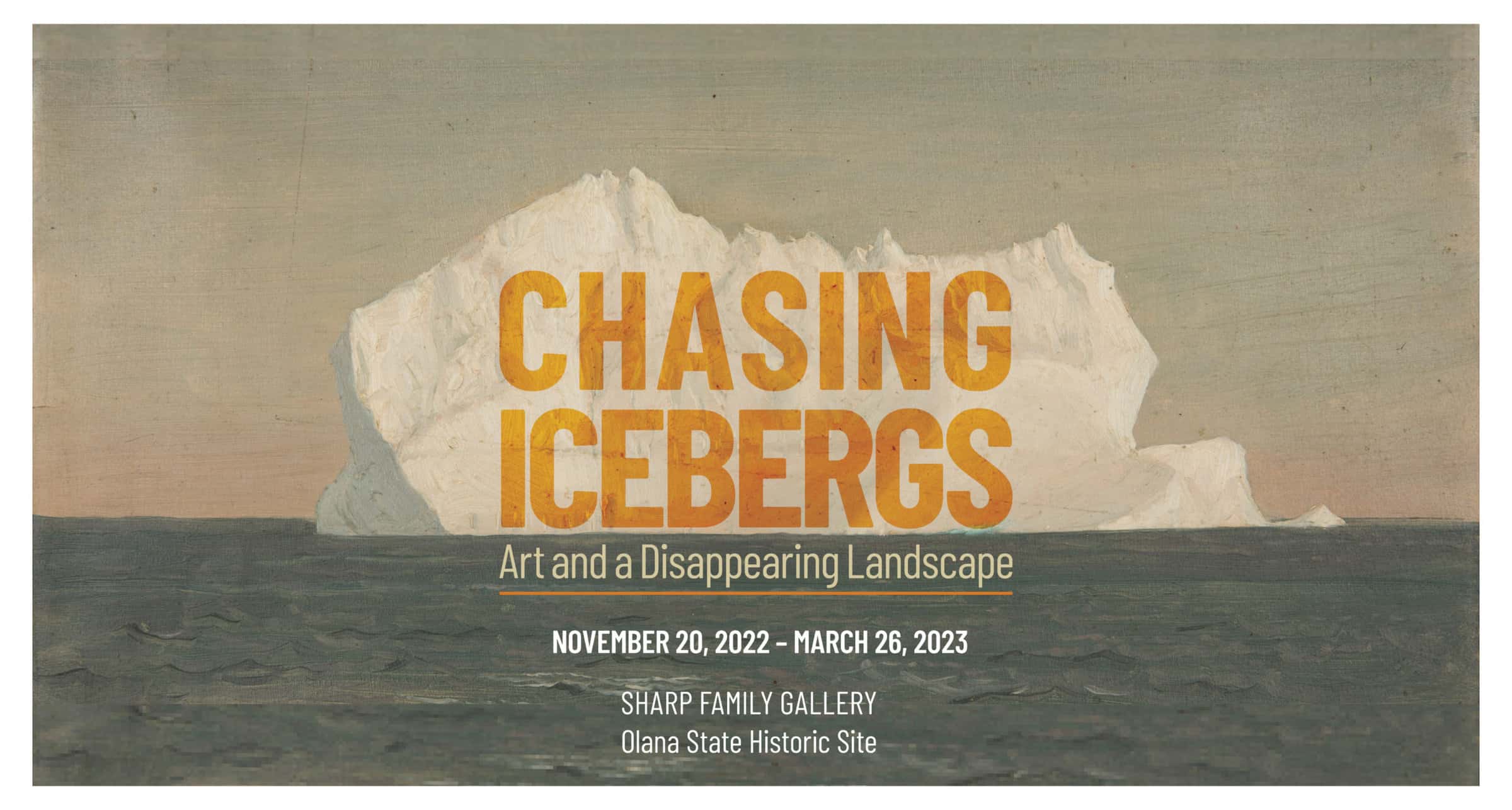
The Olana Partnership, in collaboration with the New York State Office of Parks, Recreation, and Historic Preservation, presents Chasing Icebergs: Art and a Disappearing Landscape, the first winter exhibition at Olana State Historic Site. The exhibition, shown primarily in the Sharp Family Gallery at Olana, highlights Frederic Church’s iceberg sketches from his 1859 intrepid voyage to the Arctic.
Risking his life, Church chartered a ship to the treacherous waters surrounding Newfoundland and Labrador—an area known as Iceberg Alley—on a mission that made him the first American artist to explore the region for the purpose of painting icebergs, a landmark event in the history of art. The exhibit includes photographs and historic texts which Church collected about icebergs and Arctic exploration, as well as the work of four contemporary artists who contemplate the wonder and fragility of Earth’s polar environments during our period of climate change.
The Artists
Frederic Church (1826-1900)
The preeminent artist of the 19th century known for landscape paintings such as Heart of the Andes, Niagara, The North, and his living masterwork Olana.
William Bradford (1823-1892)
Romanticist painter and photographer of the mid-19th century who focused on ship portraits.
Isaac Israel Hayes (1832-1881)
A man of many talents, Hayes was an American Arctic explorer, physician, and New York State Assemblymember.
Louis L. Noble (1813-1882)
A well-rounded clergyman who accompanied and journaled about Church’s journey to Newfoundland and Labrador.
Lynn Davis (1944-present)
World-travelling artist who has photographed in 48 countries and has had over 80 solo shows since 1980.
Zaria Forman (1982-present)
Zaria Forman documents climate change with pastel drawings. She travels to remote regions of the world to collect images and inspiration for her work, which is exhibited worldwide. She has flown with NASA on several Operation IceBridge missions over Antarctica, Greenland, and Arctic Canada.
Mark Igloliorte (1977-present)
Igloliorte is an interdisciplinary artist who utilizes painting as well as performance and installation. His passion for skateboarding, kayaking, and surfing influence the perspectival shifts in his work.
Kambui Olujimi (1976-present)
Olujimi challenges what is considered “inevitable” through sculptural, installation, photography, writing, video, and performance arts.
A Historic Expedition
From mid-June to late July of 1859, Frederic Church journeyed to the northern waters of “Iceberg Alley,” the area surrounding Newfoundland and Labrador, in search of icebergs to paint. Church’s friend and future wedding officiant, Rev. Louis Legrand Noble, was his partner in this adventure. Noble is best known as the first biographer of the artist Thomas Cole and also served a literary role during his travels with Church, recounting their adventure in the book After Icebergs with a Painter (1861). This lively but long out-of-print text has been reissued in a new illustrated edition available in the Olana Museum Store.
 From Halifax, Nova Scotia, to St. John’s, Newfoundland, Church took the passenger steamer Merlin, which had also been used by Church’s friend Cyrus W. Field on his own trip north two years earlier to determine the best landfall location for the transatlantic telegraph cable. Church and Noble were aboard the chartered schooner Integrity from St. John’s to Battle Harbour, Labrador, and then south via Newfoundland’s west coast, circling that island in the process. While they did row ashore in places, the majority of Church’s iceberg studies were made aboard this modest sailboat. The ship’s captain found his encounter with the diligent artist at work so inspiring that he began painting icebergs himself.
From Halifax, Nova Scotia, to St. John’s, Newfoundland, Church took the passenger steamer Merlin, which had also been used by Church’s friend Cyrus W. Field on his own trip north two years earlier to determine the best landfall location for the transatlantic telegraph cable. Church and Noble were aboard the chartered schooner Integrity from St. John’s to Battle Harbour, Labrador, and then south via Newfoundland’s west coast, circling that island in the process. While they did row ashore in places, the majority of Church’s iceberg studies were made aboard this modest sailboat. The ship’s captain found his encounter with the diligent artist at work so inspiring that he began painting icebergs himself.
Church’s icebergs speak to the continuing role of art in times of crisis, a focus of this exhibition. These artworks are the direct, if unexpected, product of a period of brutal conflict. After Church’s journey, the major canvas that resulted from the trip, The Icebergs, debuted immediately on the heels of the Battle of Fort Sumter and the beginning of the Civil War.
The Civil War negatively impacted the sale and showing prospects of The Icebergs. Adapting to the pivotal American movement he was living through, Church retitled the painting The North upon its public debut in 1861, explicitly supporting the Union cause. Church donated exhibition receipts from the display of the painting to the Union Patriotic Fund.
When its tour continued to Great Britain in 1863, Church returned to the original, less political title to help the prospects of the painting there, where potential buyers often sympathized with the American Confederacy. At that time, he also added the wreckage of a ship in the foreground, alluding to the ill-fated arctic expedition of Sir John Franklin, which attracted great public interest and multiple search missions in the period after he was lost without a trace in 1845. The wrecks of Franklin’s two vessels were only found at last in 2014 and 2016.
Today, icebergs remain a symbol of changes to the climate of our planet. The icebergs found in “Iceberg Alley,” which Church sketched in 1859, drift south after breaking off from the glaciers of Greenland. In the coldest years, more than 1,500 icebergs may be spotted in this region. By contrast, the warmest years on record have seen only one or even zero icebergs in this zone. Through the works of Church, Noble, William Bradford, Dr. Isaac Isreal Hayes, and contemporary creations, this exhibition connects historic expeditions in northern waters to the current climate crisis.
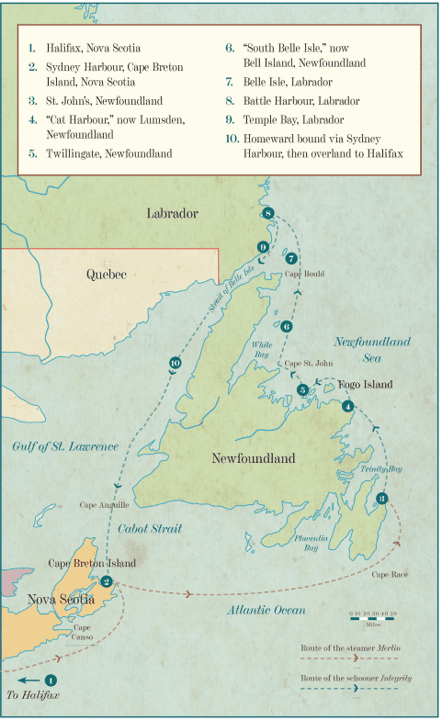
The Impact
Though arctic exploration and mapping go back thousands of years, it wasn’t until the 19th century, when whalers started charting northern waters, that reliable records of sea ice extents became available. Ship logs kept in historical archives detail ice conditions the whaling ships skirted through on their way to find game. Since then, scientists have gathered that data, as well as current measurements to see how global warming has affected polar ice freezing and melting over time. Greenhouse gases such as methane, carbon dioxide, and chlorofluorocarbons emitted into the atmosphere from human activity keep heat close to the Earth’s surface—a phenomenon known as the Greenhouse Gas Effect. The warming air and water accelerate the melting of the polar ice caps and make it harder for water to refreeze in the winter. Less ice in the northern and southern regions of the planet impacts the people and wildlife who reside in those areas—reducing the size of livable areas, increasing flooding, and decreasing food supply.
Chasing Icebergs: Frederic Church and the Disappearing Landscape shows from artists’ perspectives, northern waters then and now.
Supporting the Future
One of the primary focuses of The Olana Partnership is protecting Olana’s historic viewshed by advocating for nature conservation throughout areas within the sightlines of the park. Nature conservation, no matter the scale, can help fight climate change and save the arctic. Read more about The Olana Partnership and the environment here.
This exhibition has been made possible by support from the donors to The Olana Partnership’s Novak-Ferber Exhibitions Fund, with additional support from James and Janet Dicke. General support for The Olana Partnership’s programs is provided by the New York State Council on the Arts with the support of the Office of the Governor and the New York State Legislature.

